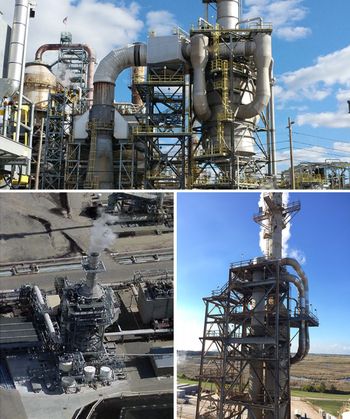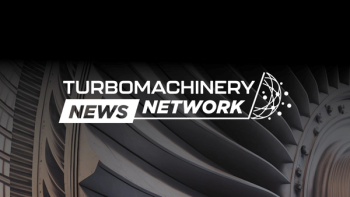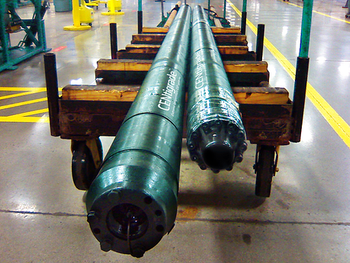
- Handbook 2026
- Volume 66
- Issue 6
Myth: Increasing Gas Turbine Production Capacity Is Easy and Risk-Free
Key Takeaways
- Data center power demands have increased gas turbine orders, with delivery times now up to seven years.
- The demand surge is driven by the need for dispatchable energy due to renewable energy's intermittent nature.
The loss of experienced personnel, underdeveloped manufacturing locations, and bottlenecked supply chains are posing significant challenges for building gas turbine capacity.
The growth in required power generation for data centers has led to a surging demand for gas turbines of all sizes. As a result, delivery times have doubled, and prospective buyers may have to wait up to 7 years for equipment deliveries. 2024 posted the highest number of gas turbine units since 2002, and orders were up by 32% from 2023 in terms of power. It is not clear whether the demand is a bubble or a permanent feature. The 2001 demand bubble for power generation, which led to over-buying and subsequent financial difficulties both for manufacturers and buyers, is still remembered by some.
The peak was created when energy investors overreacted to electric utility deregulation and created an oversupply of gas turbine power plants. The value of production reached $32 billion in inflation-adjusted dollars, briefly even eclipsing the aviation market. The market collapsed to just $8 billion in 2003, then rose again to around $20 billion in 2009 and 2010. In the following years, the demand declined again to approximately half this value before the COVID pandemic, with a peak in between. After the pandemic, operational new capacity rose again to about 10 GW in 2024 but never reached the 2018 intermediate peak of 17 GW. Certainly, supply chain issues after COVID hampered growth.
THE LATEST SURGE
For much of the past decade, the future of gas-fired power seemed uncertain, particularly due to the growth of renewable power generation, the pressure to decarbonize, and difficulties in permitting. But, at the end of 2023, a reversal occurred. For the next 5 years it is expected that 46 GW of new gas-fired power will come online, up from about 39 GW over the last half-decade. However, the actual demand may be significantly higher, mostly for peaker plants. This growth will be augmented by uprates and the modernization of existing plants.
The growth in renewable energy, with its intermittent availability, has created a large demand for dispatchable energy in the form of gas turbine power plants, both simple and combined cycle. The large driver for new power generation has been fostered by the demand for new data centers, with a surge in AI-related, Bitcoin-related, and general data processing.
Natural gas power is relatively cheap, cleaner than coal, and it can generate power all day and all night, unlike wind and solar. So, why is the production of gas turbines suddenly a bottleneck for the growth of data centers? Why can’t the manufacturers just simply increase production, or quickly ramp up their production capacities, at least to their production capacities only 10 years ago?
For the next 5 years, it is expected that 46 GW of new gas-fired power will come online, up from about 39 GW over the last half-decade. However, the actual demand may be significantly higher, mostly for peaker plants.
IDENTIFYING BOTTLENECKS
The first reason is people: Unemployment is relatively low, and the industry lost many experienced employees to retirements and other industries that offered the hope of better pay and stable employment. Designing, building, and assembling turbomachinery requires very skilled craftsmen and engineers with many years of experience. Even with improved training methods and AI-supported tools, this workforce takes years to build up. In the interim, some companies have the capability to increase shifts or working hours, but this can only marginally increase the output.
The ramp up is further limited by facilities. Some manufacturers may have underutilized existing facilities, but many manufacturing facilities have simply been shut down. Building new facilities takes significant amounts of time and huge investments. The required machinery faces similar demand by many industries, with subsequent prolonged delivery times. Environmental impact studies and permits take time. Locations must be found that can provide a well-trained work force in sufficient numbers. Large investments have to be amortized in the long term and only make sense if the current boom is expected to last for many years.
Another key factor is the capability of the supply chains to ramp up. Gas turbines require many parts and materials from suppliers spread all over the world. Exotic materials and sophisticated processes are abundant in the manufacture of gas turbines. Any sub-supplier faces the same limitations regarding people and facilities as described above. In addition, moving goods around the globe has been hampered by politics, as well as limits in shipping capacity. Further, as the demand for natural gas-fired power plants has led to a gas turbine bottleneck, secondary bottlenecks in the equipment supply chain for the natural gas fuel supply—such as compressor stations and pipelines (which have longer development and construction times than power plants)—have also become an urgent problem.
Thus, ramping up production is not only time consuming, but it also requires large investments that can only be justified if manufacturing levels can be maintained over a long period of time. Therefore, it’s neither fast nor risk-free to ramp up.
Klaus Brun is the Vice President of Product and Technology at Ebara Elliott Energy. He is also the past Chair of the Board of Directors of the ASME International Gas Turbine Institute and the IGTI Oil & Gas Applications Committee.
Rainer Kurz is a recent retiree as Manager of Gas Compressor Engineering at Solar Turbines Inc. in San Diego, CA. He is an ASME Fellow and has published over 200 articles and papers in the turbomachinery field.
Articles in this issue
about 2 months ago
Usual Difficulties & Challenges with Gear Units in Turbomachinery Trainsabout 2 months ago
Gas Turbine Industry 10-Year Outlookabout 2 months ago
U.S. Power Industry Outlook 2026about 2 months ago
Turbomachinery International: 2026 HandbookNewsletter
Power your knowledge with the latest in turbine technology, engineering advances, and energy solutions—subscribe to Turbomachinery International today.




